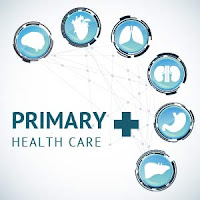Comprehensive Primary Health Care framework for Zandile who has tuberculosis
Comprehensive Primary
Health Care framework for Zandile who has tuberculosis
South Africa has the highest encumbrance of tuberculosis (TB), this infection it is an airborne disease which is caused by Mycobacterium tuberculosis, the main source for transmission of the disease is through a contagious person infecting those who share air space with. The most active method for preventing the infection it is early detection on new cases and immediate start of patients onto effective treatment. Well there are several factors that influence the success of the treatment and the transition of the infection into the development of an active disease, those factors includes socioeconomic issues, the etiologic agent and clinical treatment.
There are several components of a Comprehensive Primary Health Care programme that are important in addressing the health crisis which will be used for Zandile namely curative, prevention, rehabilitative and promotive.
Curative
Curative approach places emphasises the treatment of the
biological and psychological causes and symptoms of disease through the use of
medicine and other therapies. TB can usually be cured and more than twenty
drugs have been developed for treating TB. But most of the drugs were developed
many years ago. The treatment usually consists of a combination of TB drugs
that must be taken for at least six months. But the treatment will only be
successful if the drugs are taken exactly as required for the entire length of
time. The drugs are used in different combinations in different circumstances.
For example, the five “first line”: Isoniazid, Rifampin, Pyrazinamide, Ethambutol and Streptomycin drugs are given to people who have never had
treatment before. Some of the drugs have very severe side effects such as skin rashes,pins and needles,in very few cases people may experience jaundice, which is the yellowing of skin or eyes and are very
difficult to take for such a long period of time . This is why there is an
urgent need for new TB drugs to be developed. In addition many people are now
resistant to one or more of the drugs.
Prevention
TB prevention consists of several approaches first being to stop the transmission of TB from one adult to another. This is done through firstly, identifying people with active TB, and then curing them through the provision of drug treatment. With proper TB treatment someone with TB will very quickly not be infectious and so can no longer spread the disease to others.
The second approach of TB prevention is to prevent people
with latent TB from developing active, and infectious, TB disease. Anything which increases the number of people
infected by each infectious person, such as ineffective treatment because of
drug resistant TB, reduces the overall effect of the main TB prevention efforts.
Also the pasteurization of milk helps to prevent humans from getting bovine TB.
There is also the vaccine for TB, but it makes only a small contribution to TB
prevention, it does little to interrupt the transmission of TB among adults.
Health care workers, who provide care for
patients for TB, should adhere to infection control procedures to ensure that TB
infection is not passed from one person to another. However, infection control guidance must not only be written but also
implemented. People should receive education on Hygiene etiquette which will teach them on how to cough as to avoid the spread of the infection, also the education of early detection of TB. the other important factor to prevent the infection would be the visible posters that are informative this posters should be visible in all health providers services hospital and clinics.
Rehabilitative
Little attention is given to the social, psychological and
economic impact extended treatment can have on the lives of individuals. Due,
to a large extent, to the high levels of stigma that continue to exist in many
high-burden countries, people affected must face obstacles even before
diagnosis. The side effects of TB medication (especially DR-TB) are sometimes
extreme, and require extensive therapy some patients for example even lose
their ability to hear, also it has been discovered that most patients with TB are prone to develop polyneuropathy which is affecting the peripheral nerves, therefore the rehabilitation through the physiotherapy. Nutritional support is another key factor that is needed
to rehabilitate the patients as most patients lose appetite due to medication and vomiting - nutritional rehab, which includes dietitian that will provide eating plan and supplements.
Promotive
Health it as a fundamental human right, therefore for individuals
to have control over their health and its factors enables them to improve their
health hence it is crucial that they have access to information or education
involving factors of their health.
Health promotion, when implemented in concert
with other strategies including education, community development, policy,
legislation and regulation, is more effective in preventing Communicable and
Non-Communicable Diseases. Health
promotion is a key strategy in the prevention and treatment of TB, it can assist
in strengthening individual knowledge and skills on preventing this infection as well as education on proper ventilation in housing will help the patients which prevent the spread of PTB.
References
Nesheim M C. Ascariasis and human nutrition. In Ascariasis
and its prevention and control, D. W. T. Crompton, M. C. Nesbemi, and Z. S.
Pawlowski (eds.). Taylor and Francis,London, U.K.1989, pp. 87–100.
Otranto D, Capelli G, Genchi C: Changing distribution patterns
of canine vector borne diseases in Italy: leishmaniosis vs.
dirofilariosis.Parasites & Vectors 2009; Suppl 1:S2.
The Global Fund (2012) Zandile in South Africa: TB Treatment Makes a Difference. Available at: https://www.youtube.com/watch?v=tZZNpdO_ABc (Accessed: 21 March
2018)







Comments
Post a Comment